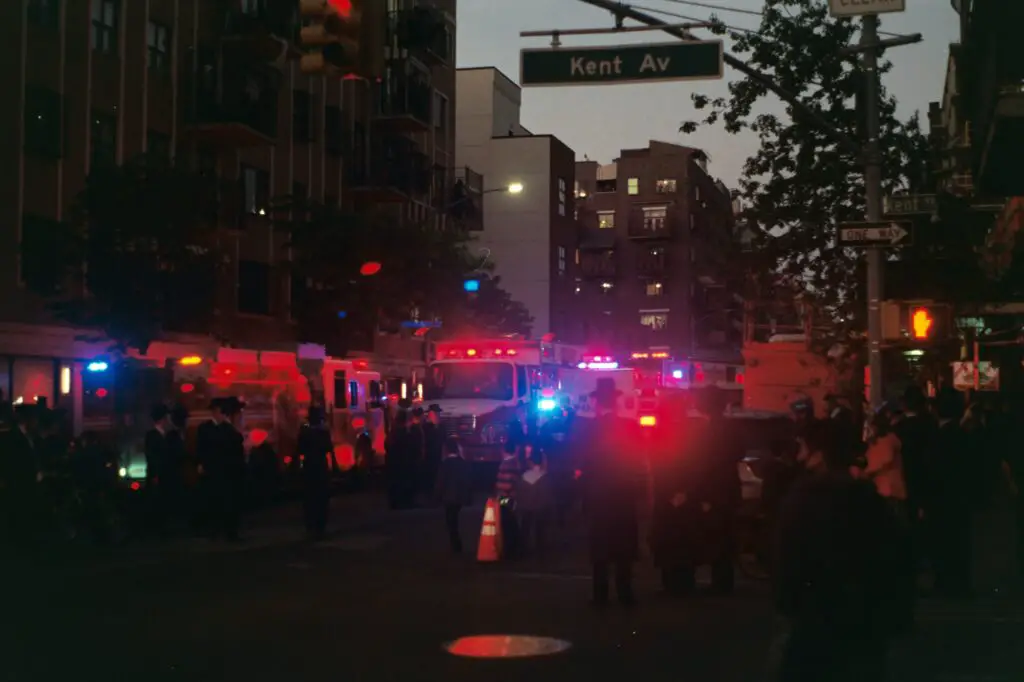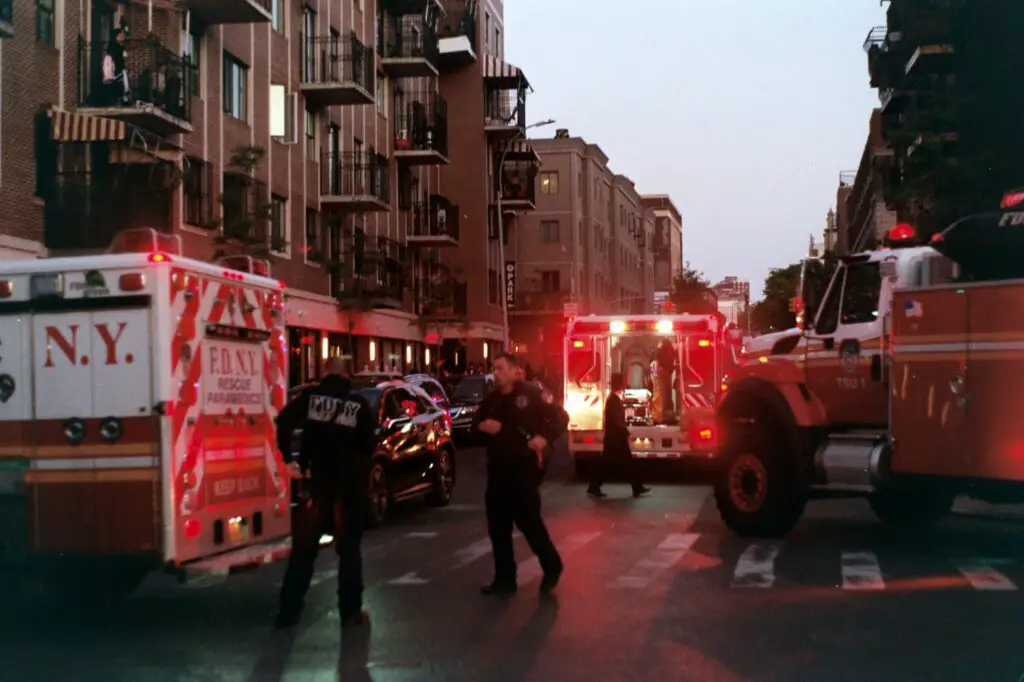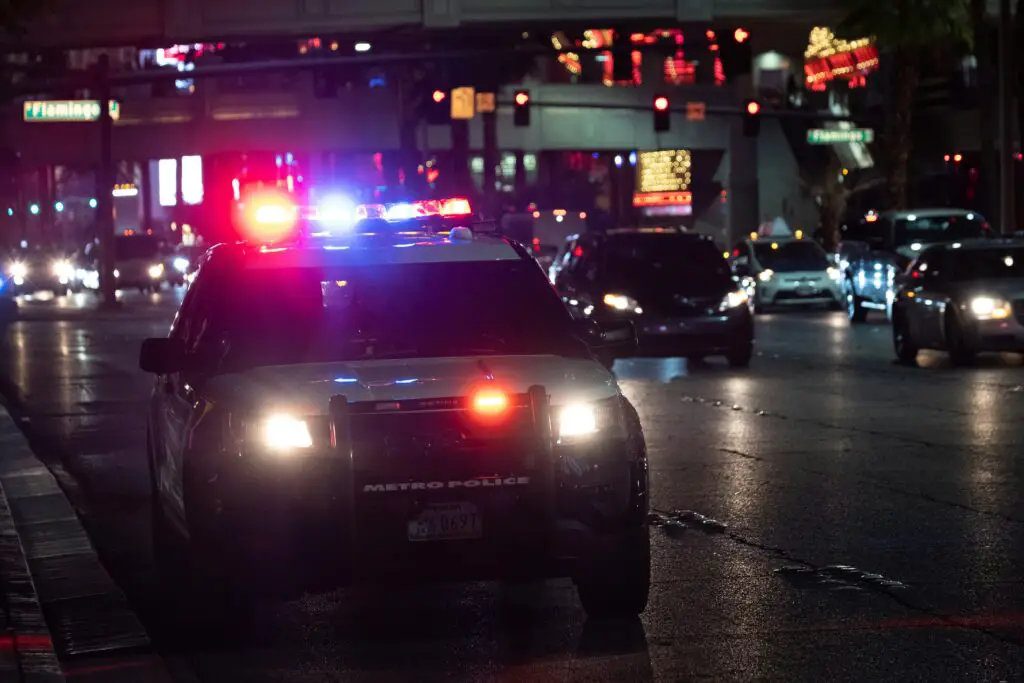When conducting their job, police officers can sometimes do things that seem confusing or deceiving. They use speed traps, set up undercover operations, and sometimes use deceiving tactics to help perform arrests. When not directly stopping a crime, these behaviors can confuse people who may encounter police. This is the case for this man driving near an officer who had his headlights and emergency lights turned off. Due to the confusion of the incident, the officer and the man ultimately collide. Following the crash, the man receives a $14,000 failure to yield fine. Is it justified?
Dashcam Footage of the Incident
The footage of this incident comes from the dashcam of a civilian car. It takes place sometime in the night on a road with multiple lanes. The driver is in the left lane of the street, and a police car is in the next lane, traveling in the same direction.
When they encounter an intersection, both cars begin to turn. The police officer swerves into the dashcam’s lane, causing a minor crash. In a news coverage voiceover, the NYPD sent the driver a $14,000 bill for damaging the police vehicle.
Is His Fine Justified?
As seen in the dashcam footage, the NYPD cop car was driving with both its regular and emergency lights off. After the crash, it appears the officer quickly turned his lights on. According to attorney Ugo Lord, the cop’s poor driving behavior would make him liable.
Firstly, he was driving without lights for no apparent reason, and likewise, he did not have his emergency lights on. You must yield to an emergency vehicle only when it displays its emergency signals. Thus, the officer swerving lanes is simply reckless driving in its own right. Even more, the comments on the video exclaim how the officer failed to use his blinkers to warn the driver of his lane change.
Combining all these separate reasons, the NYPD would be liable for the damages resulting from this incident.
Can Police Have Lights Off?

In reaction to this video, you may wonder if it is legal for police to have their lights off.
Police do have some exemptions that allow them to conduct their business. For instance, they can speed while chasing criminals and break some traffic laws. They also do not technically need to have their lights on in some cases. This is typically done by police when they are hiding in speed traps at night. Keeping their lights off can conceal their presence and allow them to catch unsuspecting speeders. This doesn’t violate anyone’s rights like using an undercover car.
That said, police still have to follow road rules in all other instances. They must keep their regular headlights on when actively driving and not in a chase. As shown in the video above, having no light on your car can confuse others and increase the chances of an accident.
Failure to Yield: When Must You Stop For Police?

As police do their work, they often find themselves in potentially dangerous situations. For example, they may have to speed to the crime scene or perform a traffic stop on a busy highway. These settings can put them and anyone they are dealing with in a dangerous position. For instance, in a small police survey, 28% of officers reported that a vehicle or a fellow officer had struck them during a traffic stop.
Emergency Zones
Laws require yielding to emergency vehicles to help keep both police and civilians safe. When police stop on a road, civilians must create an “emergency zone” around them. This imaginary zone is meant to give officers a safe area on the road. People should avoid this zone when possible and, if they must drive close to it, slow down.
Failure to yield from an emergency zone can put police in danger and result in big fines. For instance, failing to yield away from an emergency zone in Washington can result in tickets of over $1000.
Emergency Sirens
You must also yield to police and emergency vehicles with flashing lights and sirens. If you are on the same roadway as the officer, you should merge to the side of the road and slow down. This allows them to move quickly past you to get to whatever emergency they are responding to.
Like the emergency zone, failing to yield to an officer this way can also warrant big tickets and fines. If you are on a roadway with a median, you are not required to stop in this way. Likewise, you should yield to an officer if their flashing lights or sirens are on. Depending on the situation, an officer can charge you with “reckless driving” if you fail to yield. Charges other than failure to yield such as this can warrant even larger fines and jail time in the worst cases.
Conclusion
Despite their controversial status in recent media, police do help millions of people a year in numerous emergencies. To properly help people, they must be able to respond to emergencies promptly. Due to this, people are expected to yield when an officer is flashing their lights and sirens.
On the other hand, people do not need to yield when an officer is driving normally on the road. The video shows that police behavior can sometimes be cryptic and cause accidents. After considering the video, you may want to invest in a dash camera to help capture evidence of a police mistake. Who knows, maybe it could save you $14,000 in the future!

